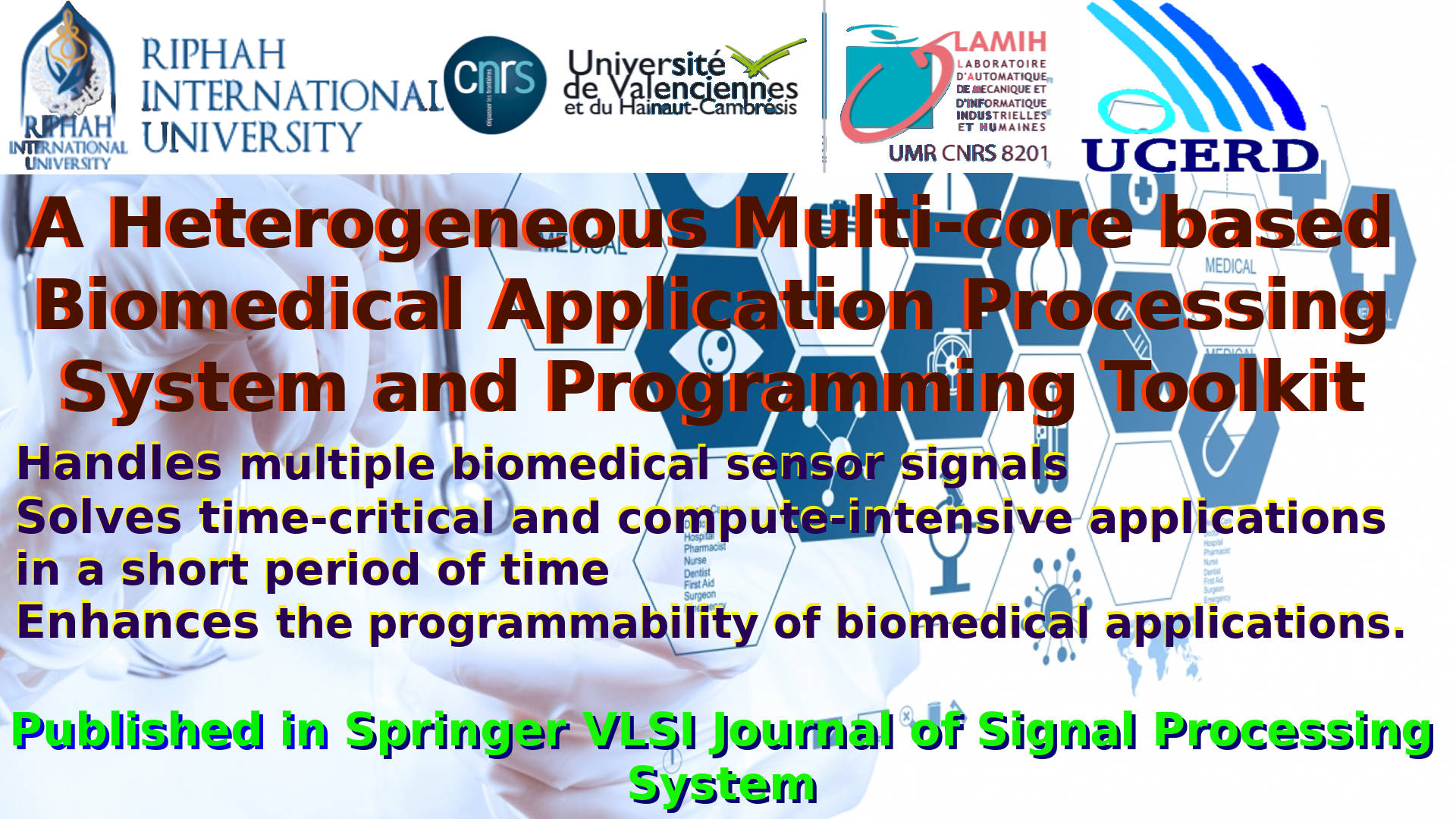
UCERD Pvt Ltd Islamabad Team and Universite de Valenciennes France Developed a A Heterogeneous Multi-core based Biomedical Application Processing System and Programming Toolkit
Dr. Tassadaq Hussain is the team lead of this project. The work has been published in IEEE conference and Springer VLSI Journal of Signal Processing Systems.
Dr. Tassadaq Hussain is the team lead of this project. The work has been published in IEEE conference and Springer VLSI Journal of Signal Processing Systems.
UCERD Pvt Ltd Islamabad Team and Universite de Valenciennes France Developed a A Heterogeneous Multi-core based Biomedical Application Processing System and Programming Toolkit
UCERD Rawalpindi
Supercomputing Center
UCERD Murree
In this work our teams developed a hardware architecture and programming toolkit to gather and processes irregular and complex biomedical applications called Biomedical Application Processing System (BAPS). The system uses a biomedical sensor interface that accesses data from multiple biomedical sensors and performs signal conditions in hardware. The BAPS memory system uses Cache and Scratchpad memories that give support for active and passive biomedical applications. The processing supports RISC (Reduced Instruction Set Computer) multi-processor and Field Programmable Gate Arrays (FPGA) based reconfigurable accelerator
cores.
The BAPS bus system efficiently integrates multiple heterogeneous processing cores with the memory system and sensor interface. The BAPS biomedical applications toolkit provides a single programming platform to access data from biomedical sensor, stores and manages it in the memory system and process it by using heterogeneous multi-core processors. The programming toolkit removes the biomedical programmer 0 s effort by providing biomedical application function calls which handle multiple bio-medical sensors data transfers, per-
forms memory management and parallel computation automatically and meets the high performance requirements of the biomedical applications. The programming toolkit facilitates the biomedical application programmer by giving a general interface architecture between the multiple biomedical sensors and the processing cores. It allows the programmer to write and execute applications on the hetero-
geneous processing system.
The BAPS reduces the application processing time, handles multiple biomedical sensors with the potential to utilize parallelism while
balancing the workload. Salient contributions of the developed Heterogeneous Multi-core based Biomedical Application Processing System and Programming Toolkit are:
Handles multiple biomedical sensor signals
Solves time-critical and compute-intensive applications in a short period of time
Enhances the programmability of biomedical applications.
cores.
The BAPS bus system efficiently integrates multiple heterogeneous processing cores with the memory system and sensor interface. The BAPS biomedical applications toolkit provides a single programming platform to access data from biomedical sensor, stores and manages it in the memory system and process it by using heterogeneous multi-core processors. The programming toolkit removes the biomedical programmer 0 s effort by providing biomedical application function calls which handle multiple bio-medical sensors data transfers, per-
forms memory management and parallel computation automatically and meets the high performance requirements of the biomedical applications. The programming toolkit facilitates the biomedical application programmer by giving a general interface architecture between the multiple biomedical sensors and the processing cores. It allows the programmer to write and execute applications on the hetero-
geneous processing system.
The BAPS reduces the application processing time, handles multiple biomedical sensors with the potential to utilize parallelism while
balancing the workload. Salient contributions of the developed Heterogeneous Multi-core based Biomedical Application Processing System and Programming Toolkit are:
Handles multiple biomedical sensor signals
Solves time-critical and compute-intensive applications in a short period of time
Enhances the programmability of biomedical applications.





